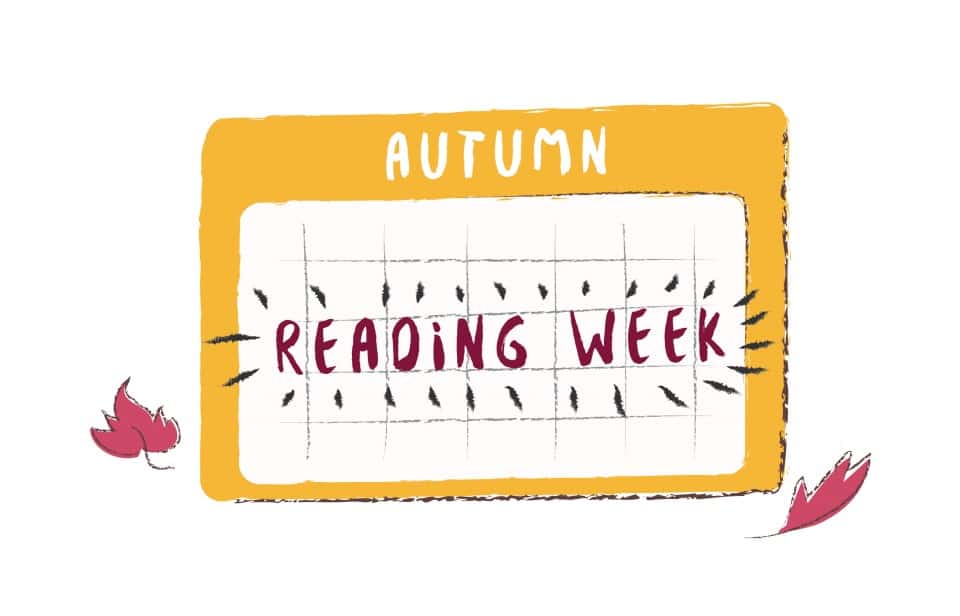Reading week is here, and it is difficult to ignore the fact that UTSG is the only University of Toronto campus to schedule its reading week in November. UTM and UTSC had theirs on the week of Thanksgiving, as did many other universities across Ontario, including McMaster University, Ryerson University, the University of Western Ontario, the University of Waterloo, and York University. Carleton University, the University of Ottawa, and Queen’s University, meanwhile, had their reading week two weeks ago in late October. UTSG ought to reconsider its unique timing.
Until recently, there was no fall reading week at U of T — it existed exclusively in the winter term. It was only two years ago that U of T started scheduling a reading week in the fall term as well, giving students a chance to take a break and catch up on schoolwork.
Each campus decided when to schedule its reading week separately. At UTSG, the University of Toronto Students’ Union (UTSU) and the Arts and Science Students’ Union (ASSU) held a referendum in 2015 on the issue.
Students voted 6,112 to 491, with a 22 per cent turnout, in favour of pushing forward the start of orientation and classes to allow a fall reading week to be scheduled. An ad hoc working group established by the dean of Arts and Science, which included student representatives from ASSU and some college student unions, was tasked with determining the dates.
Deborah Robinson, the current Faculty Registrar & Director of Undergraduate Academic Services, explained the reasons for the November timing. Given that there was already an existing two-day break at that time, it was logical to extend it into a full reading week.
Furthermore, student and mental health professionals, as well as students in the working group, preferred an early November reading week because it is a particularly stressful time. Indeed, it is right after midterms and right before finals, and therefore seems fitting for a break.
However, a break in early October, instead of November, would give students more time to study their coursework before most of their midterms occur. This would help them to do better on those evaluations and attain higher grades in their courses earlier in the term.
Once November arrives, a majority of the term has already passed, and it becomes harder for students to turn their marks around. The desire for a break after completing a set of midterms also increases the likelihood of students turning their focus away from school, which increases their chances of falling behind right before final exams and papers.
At UTM, the Registrar & Director of Enrolment Management, Lorretta Neebar, explained the rationale for picking Thanksgiving as their time for a break. “It is very close to the middle of the term (approximately 5 weeks in of a 12 week term) and requires four days of no classes instead of five as it falls within a week with a holiday,” she clarified. “It was determined this would be an ideal time for students, particularly those transitioning to university to catch up and get the benefits of a reading week.” UTSG should seriously consider the logic of its satellite campuses.
Meanwhile, the winter reading week is scheduled for February, starting with Family Day Monday. The fall term should mirror this schedule, and UTSG should schedule its first reading week around an existing statutory holiday that is underlined by a special meaning.
Family Day was established in Ontario in 2007 by the government of premier Dalton McGuinty, who noted, “This is a small thing, but it’s an important and, I think, a powerful recognition of our priorities… there is nothing more valuable to families than time spent together.” Accordingly, students, especially those who live in southern Ontario, are able to go home easily and spend time with their families, for not only Family Day, but the entire week that follows.
Similarly, with a Thanksgiving reading week, students would be able to spend more time with their families for what is meant to be a time to celebrate the blessings in our lives. UTSG students would also be able to catch up with friends in other universities during this time, as most other schools in southern Ontario give their students the week off.
Yet, as the reading week currently stands, we are in class in October while our high school peers are not, and vice versa in November. The weather is also nicer in October, which is better for students who wish to spend the break doing outdoor activities, particularly international students who would like to spend their time exploring a new country.
At the very least, UTSG should ask students how they feel about the current timing of reading week. Neebar explained that “UTM held three town halls in 2015 and there was a vote as to whether or not… to implement a fall reading week with proposed dates.”
UTM’s first fall reading week took place in October 2016, while UTSG’s happened the following year, from November 6–10, 2017. A web page announcing the introduction of fall reading week at UTM assures that “We will be reassessing it after two years.”
We here at UTSG should follow UTM’s lead. This year’s fall reading week is our second, and UTSG should follow suit and assess how its November reading week has worked out, starting with a student-wide consultation on whether or not it believes that the current schedule is optimal.
The UTSU should hold another referendum, this time allowing students to vote on keeping the current reading week, or moving it to Thanksgiving next year. If you ask me, we should move reading week to October — like everyone else has.
Oliver Zhao is a first-year Social Sciences student at Woodsworth College.


